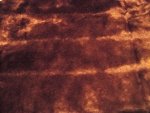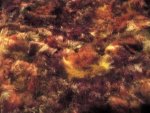|
Faux Fur Fabric – Looks Just Like The Real Thing!
Faux fur fabric also known as fake fur first came on the scene in 1929. Faux fur fabric was designed to look just like real animal fur. The fabric is a textile, made from polymer fibers and is part of the pile family of manufactured fabrics. Advances in polymer technology have made fake fur almost indistinguishable from real fur. Piles are manufactured to simulate napped fabrics.
Real fur can be expensive and there is the moral issue for some of using real fur, thus it is a good thing that technology has improved to such an extent that faux fur fabric quality has been improved tremendously making it a desirable fabric to work with.


• Easy to sew • Requires a nap layout, single layer, wrong-side up • Mistakes can often be hidden in the pile • These fabrics have a lot of lint and fuzz • Are bulky • Heat sensitive and easily damaged in pressing • Can shed or become matted • May shrink excessively • Less expensive to clean than real fur • Not as warm as real fur • Difficult to top stitch • Comes in two weights
Working With These Fabrics Requires:
• Sewing machine needles should be 80/12-100/16 sharp or universal depending on the fabric weight • Hand sewing needles sizes 5-7 • Sewing machine settings a stitch length of2.5-3 mm depending on fabric weight, loosely balanced tension, light to normal presser foot pressure • Sewing machine feet can be roller, even feed (walking foot) or zipper foot, when sewing fur to another fabric a Teflon presser foot is recommended • Thread should be good quality cotton or polyester or cotton/polyester blend • Tools and equipment recommended sharp scissors, sharp shears, shim, mat knife, brush such as dog brush for brushing the pile, awl, tapestry needle, pins • Interfacing used should be sew-in, fusible should be avoided • Markers recommended are chalk, soap slivers, and artist’s pastel pencils, temporary marking pens, felt tip pens • Seams and hems recommended are seams for fur, plain, hems plain, and double hemmed, finishes recommended should be bands such as fabric, pleather or synthetic suede, bindings, ribbings, facings that are self fabric, plain, synthetic suede or pleather • Linings used should be those that are traditional outerwear linings • Closures recommended should be large covered hooks and eyes, decorative buttons with loops, frogs, tabs, toggles, large zippers, faced button holes
These Fabrics Are Suitable For:
Loose fitting styles with shawl collars or no collars, raglan sleeves, coats, capes, ponchos, ruanas, blazers, bomber jackets, vests, cardigans, hats, muffs, bedspreads and pillows.
For information about the notions, tools, and equipment required to complete a sewing project, click here to view the sewing notions home page
For more information about this family of fabrics some great references are:
Claire Shaeffer’s Fabric Sewing Guide
More Fabric Savvy by Sandra Betzina
For more interesting information about faux fur fabric and how it is made click here on Answers.com
For some interesting information about how to sew fake fur click here on About.com
Felt Fabric
|




